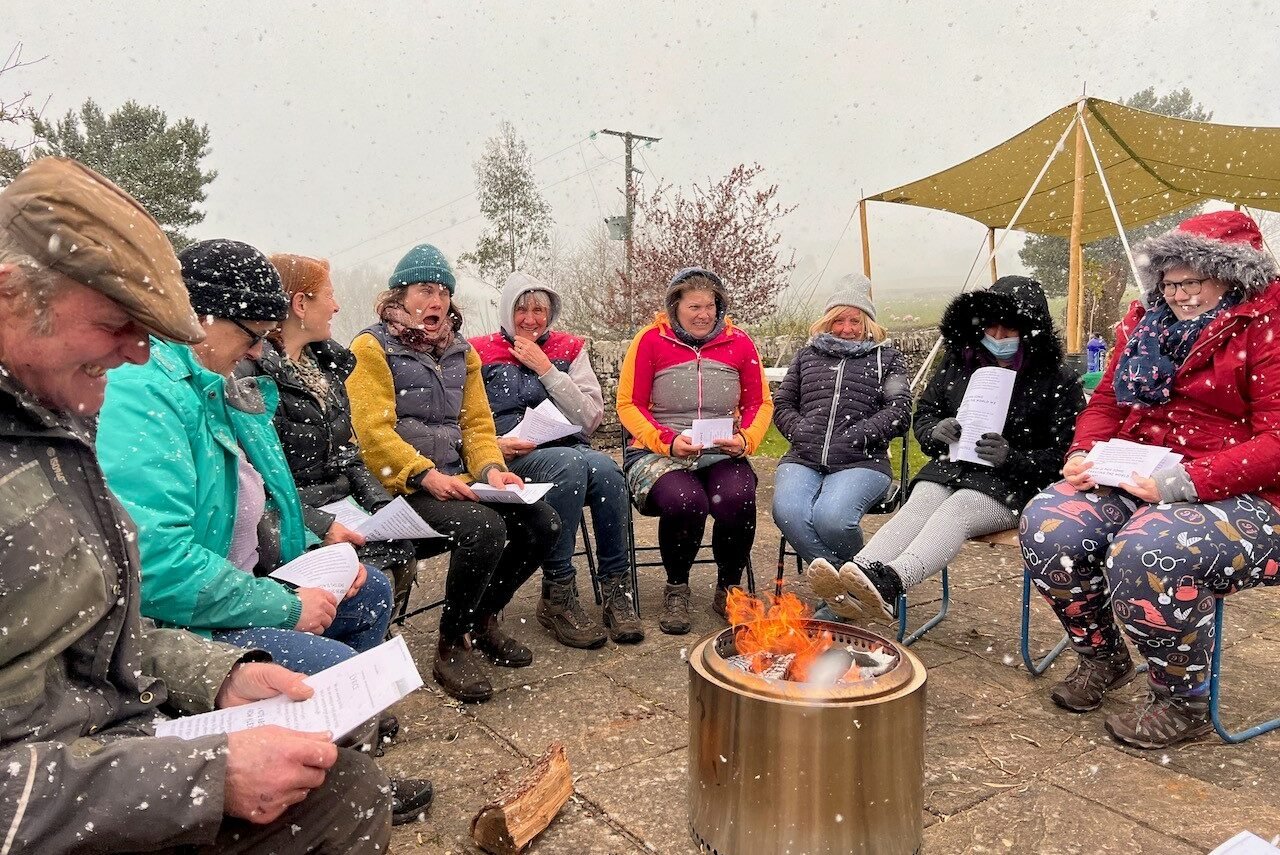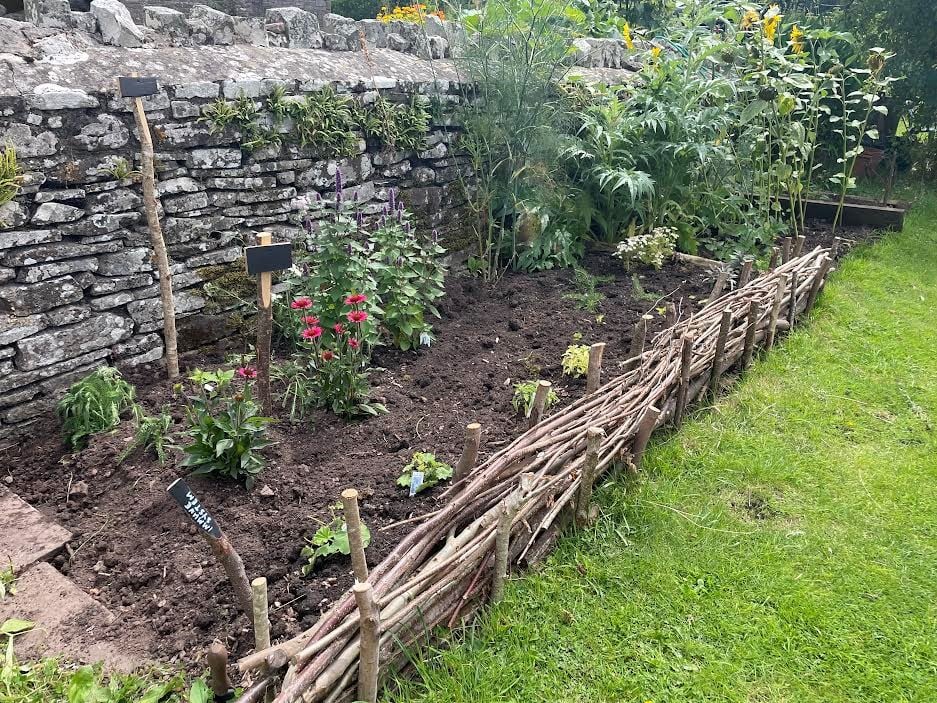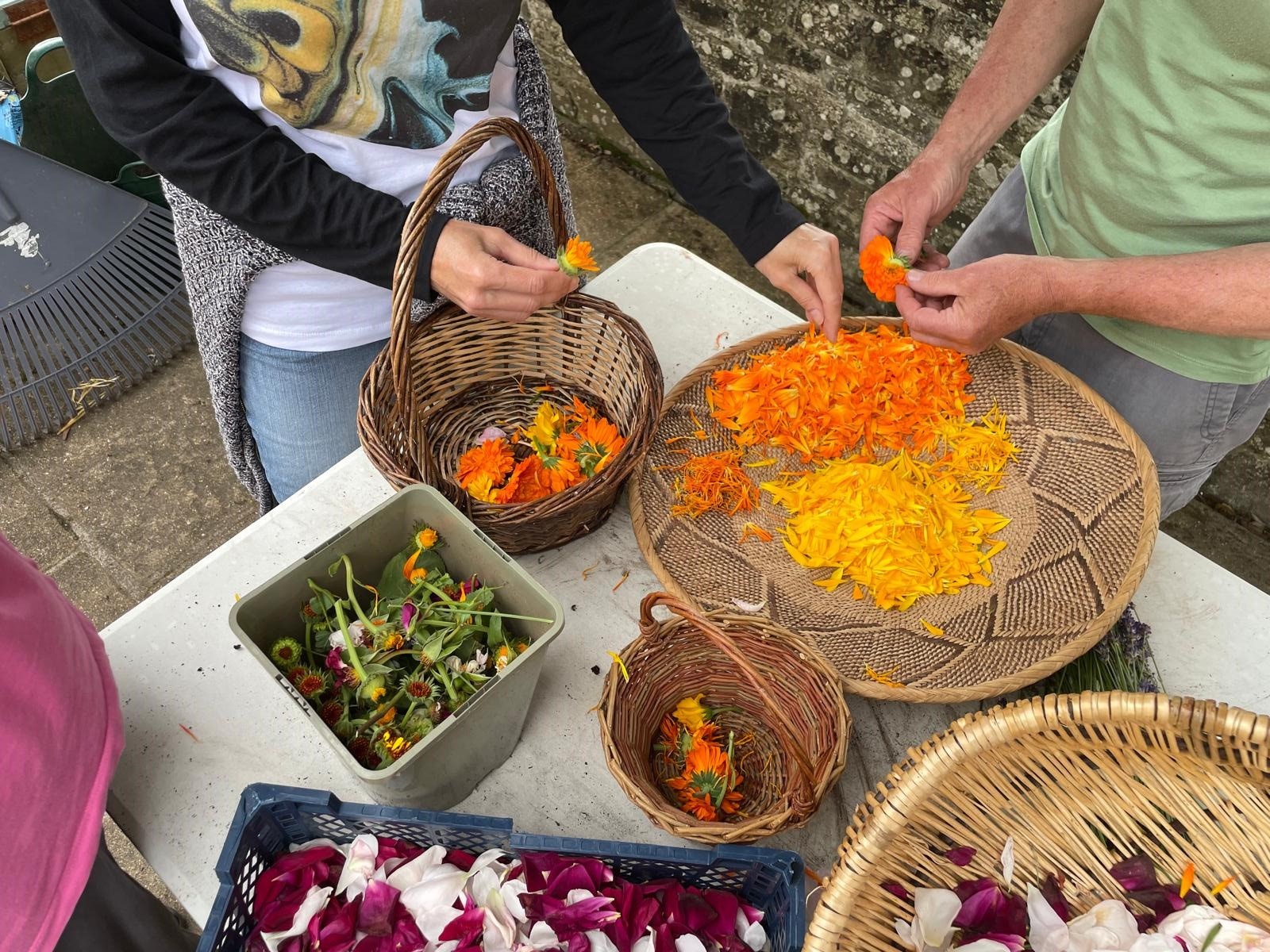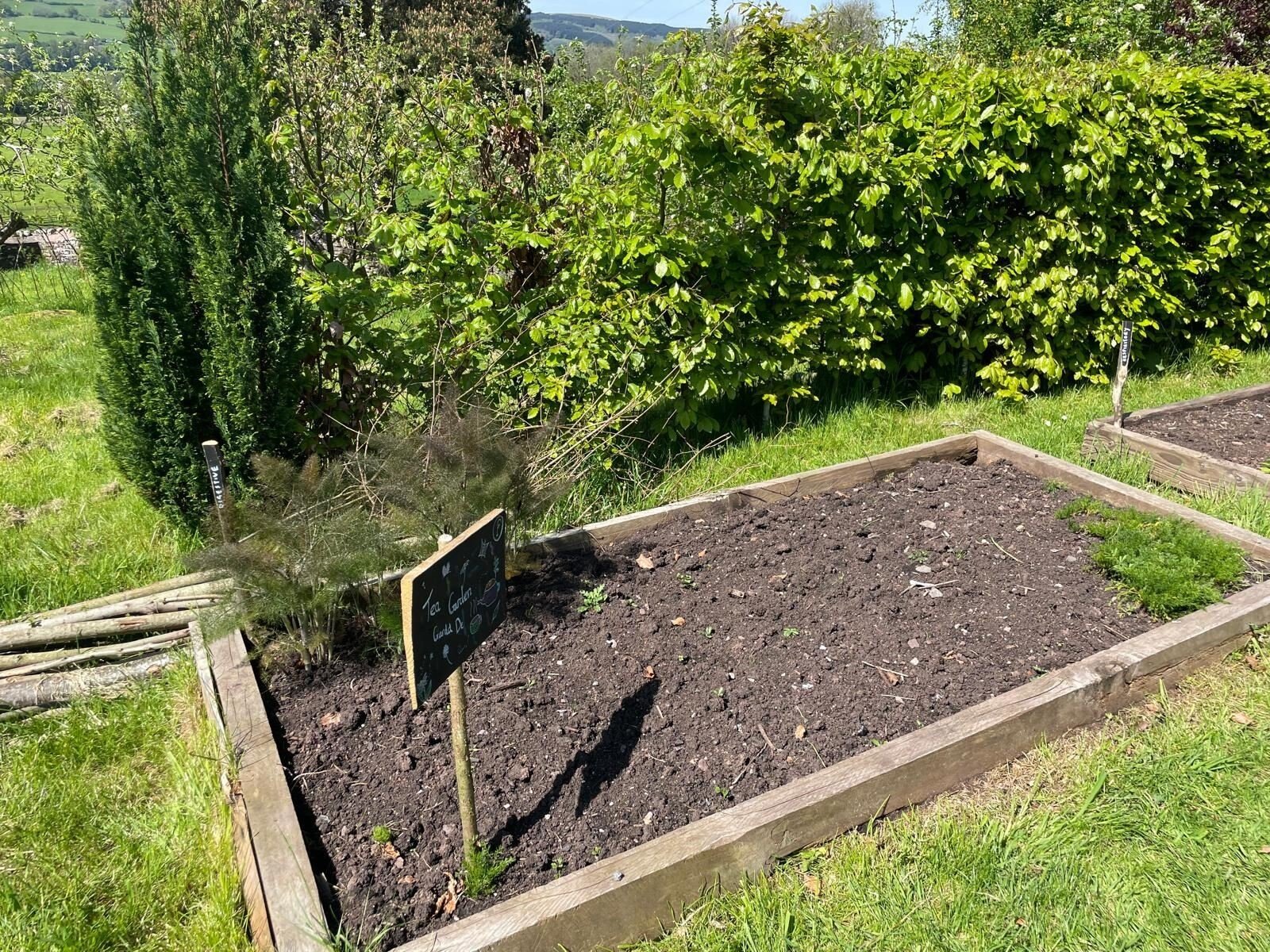Green Prescribing with The Fathom Trust

In 2024 The Fathom Trust received a National Garden Scheme Community Garden Grant to create an apothecary garden so they could expand upon the social and therapeutic gardening activities already taking place at their hub in the Brecon Beacons.
Having a garden for the community to come together, learn about plants and their usage, heritage and history in a welcoming inclusive space is an important part of the green prescribing the trust are encouraging. They have partnered with local GP surgeries and accept referrals from mental health teams and charities like Mind.
As well as integrating the garden as part of the ‘Making Well’ course, the hope was that eventually the plants grown would be able to produce teas, salves, herbal vinegars and oils. We talked to Founder Dr William Beharrell to find out more about the project.
What was the inspiration for starting ‘The Fathom Trust’?
I was fortunate to be involved in a project promoting traditional Afghan heritage, which involved the creation of an Institute for Afghan Arts and Architecture in Afghanistan. I was inspired by how the beauty, skills, and pride of these craft traditions helped the community to flourish and helped individuals, often with stories of trauma, to find their place in it. Our work in the community led to us setting up a family health clinic, which in turn inspired me to retrain in medicine. Several years on, I was able to draw on my experience in Afghanistan to respond to the limitations imposed by our medical model in the NHS, along with its stretched resources. Fathom is promoting a soulful approach to health and healing by strengthening communities’ capacity for mutual aid. By focusing on craftsmanship, conservation, and contemplation, we are preserving local heritage skills, conserving natural habitats, and improving health outcomes for local communities.
Who has been involved in the creation of the garden so far?
The Apothecary Garden design has been led by Jess Tanner, our head of programmes and a trained eco therapist. Jess has travelled widely and draws on her experience of other cultures, together with her training with the Natural Academy, to create beautiful, practical and accessible garden spaces. As a team we work to bring in groups from our community to help establish the garden. This has included people referred by their GP or mental health team, but also people who have self-referred having heard about it through Mind. We have had people come from the Police force and probation service, groups from the NHS, Fire Service, head teachers, local clergy, along with children who have been absent from school since the pandemic. Together, they have built raised beds, dead hedges, a composting system and laid out and planted the garden.
What have course participants reactions been to the Apothecary garden?
“At Making Well I was made to feel welcome and part of a great group. The team are so supportive, even when you are having a bad day. Gardening has become big part of my life, and the course has affirmed this and has given me the wish to try growing vegetables too.” – Kim’s Reflections
“I had a sense of being in a very safe and nourishing space. It was like a sanctuary in which to explore myself and my connection to the world more. There was a lot of support and goodwill, and I particularly enjoyed the sense of everyone working together. Through my participation in the course, I have noticed that I am feeling more resilient and I am now looking for ways to give back to life and others. I have enjoyed the gardening, pottery and creativity in nature and having regular stop gaps for grounding exercises and breathing throughout the day.” – Birgitta’s Reflections
“The team were universally welcoming, supportive, calm, kind, interested and skilled. I have been more open to ideas, more receptive to things that I would have felt sceptical about in the past. Participating in the course helped me realise how much I needed it, even though I didn’t think I did beforehand. It helped me to start my journey back into the wider world after a very traumatic experience. I found the grounding exercises very helpful and I am going to try guided mediation to help with anxiety. I plan to plant a living willow screen in my garden and also attend some of the crafters café sessions. I intend on going back to working outdoors, as the course reminded me how much I used to enjoy it.” – Lucie’s Reflections
Are there any unusual facts/history about the plants you’ve chosen to grow?
In our wheel-chair friendly raised beds we have planted perennial chives, chards, nasturtium, calendula, kale, courgettes, lettuce agretti (Chinese edible for salads) mange tout, borage for the bees, coriander, heritage beans, Hokkaido winter squash and we have an annual cut flower corner so that visitors can take their own posy home.
In our Heart bed – supportive of heart health – we have planted aconites used for arrhythmias, digitalis, and motherwort to promote good blood pressure and health of circulatory cells, Damask roses from Iran and Greece to use the for their rose oil and giant yellow scabius.
In the Nervous system bed we have lemon verbena to soothe stomach cramps and period pain in particular and artemesia to reduce pain and swelling, hyssop, and skullcap, which is of interest to those research preventative cures for Alzheimer’s.
In our Respiratory bed we have thyme, spearmint, menthol, hyssop
In our Digestive bed we have catmint, which contains nepetallactone, which can improve relaxation and boost mood. We also have sage for oral health, yarrow, and camomile.
In our Immune system bed we have bergamot (also good for reducing cholesterol) , bee balm, Lady’s mantle (good anti-inflammatory, sages, feverfew, and echinacea
We have planted rosemary and lavender in our medical culinary bed and in our skin bed we have rudbeckia, comfrey, sun flowers.
Do you have any tips for people looking to get involved with green prescribing?
We have learned over time that ‘less is more’ and we now focus on creating more time for people to encounter the transforming beauty of the natural world. One way of doing this which has proved very effective is our ’sit spots’ where people are encouraged to find a place in the landscape and spend ten minutes in silence, and to get into the habit of returning to that spot each session. Different people respond to different materials and crafts differently and so we tend to have a variety of horticulture and traditional crafts as part of our sessions. Very often, it is the people who struggle the most on the first session that go on to have the most transformative experience. This has taught us to trust in what we’re doing but also to make sure we are attending to every detail to create a genuinely safe and peaceful space. Our model is to work with landowners to maintain and improve the natural habitats of which they are stewards and to assemble teams of local artisans to highlight the intelligence and beauty of their work and help to conserve endangered traditional craft skills. Green prescribing offers a way to combine this with improving health outcomes and adding value to clinical encounters, which in turn helps to improve the morale of clinicians making the referrals.

If you’d like to know more about our Community Garden Grants, including when and how to apply, click the link below. Follow us on Instagram @ngscommunitygardens for more community gardening project stories.

























